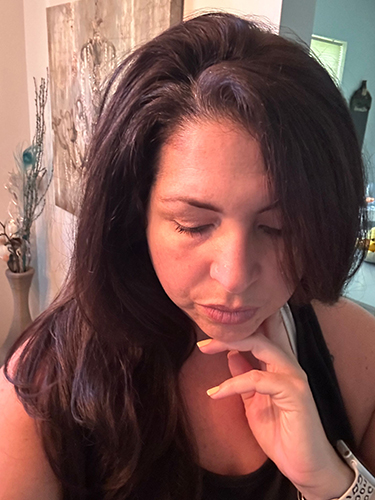The Buzz In Your Ears
Is It Cicadas — or Tinnitus?
Published May 2024
As cicadas emerge across the United States, the insects bring their traditional sounds of summer with loud, high-pitched noises that sound like a buzz, shrill or shriek. Cicadas have a lifespan of approximately four weeks, so while their noises are short-lived, another sound continues for millions of people long after summer has ended.
What Is Tinnitus and Pulsatile Tinnitus?
Tinnitus is a buzzing, ringing, hissing, whooshing, whistling or clicking sound in one or both ears, which occurs in the absence of external noise for about 20 million people living in the United States. Some people describe tinnitus as sounding like cicadas in their heads. Five million people in the U.S. with tinnitus have pulsatile tinnitus, where a rhythmic, pulsating sound beats in one or both ears in sync with their heartbeat.
“While cicadas bring loud noises for a short period of time, it’s nothing compared to what patients with pulsatile tinnitus are hearing every single day. Some describe it as a ‘whooshing’ sound or very similar to a baby’s heartbeat on an ultrasound machine pulsating through their ears,” explains Ali Shaibani, MD, an interventional neuroradiologist at Northwestern Medicine. “For many patients, the noise interferes with everyday life and can be debilitating.”
What Causes Tinnitus and Pulsatile Tinnitus?
Tinnitus is sometimes the first sign of hearing loss in older adults, and it can also be triggered by noise-induced hearing loss. Something as simple as a piece of ear wax blocking the ear canal or an ear or sinus infection can also cause tinnitus.
Pulsatile tinnitus happens when there are issues with your blood vessels, such as a change in the flow of blood, in your head and neck. Conditions that cause these issues range from harmless to dangerous. The specific causes of pulsatile tinnitus are diagnosed through a series of hearing, physical examination and imaging tests to learn what’s happening inside your skull.
Some causes of pulsatile tinnitus include:
- Idiopathic intracranial hypertension (IIHTN), or abnormal pressure on the brain, is one of the most common causes of pulsatile tinnitus. Many people with this condition have a narrowing of the two main veins that relieve the pressure in the head by taking blood and cerebrospinal fluid back to the heart. Aside from hearing a “whooshing” noise, the most common symptoms associated with IIHTN include daily headaches and vision issues. Symptoms can increase or decrease when a patient lies down or turns their head. Symptoms can also change when pressure is placed on the jugular vein.
- An abnormal connection between arteries and veins, such as an arteriovenous fistula, close to the base of the skull. This less-common condition which is potentially dangerous, is treatable in most cases using minimally invasive endovascular techniques.
- Narrowing of the main neck arteries close to the base of skull. This can be due to several causes. If the narrowing is significant enough to pose a risk for stroke, it can also be treated effectively with minimally invasive endovascular techniques.
- Tumors, which in rare cases can affect the blood vessels near the ear.
What Are My Treatment Options?
If there’s no underlying cause, there are several ways to ease the symptoms of tinnitus, including:
- White noise, such as a white noise machine or fan
- Sound-masking devices worn in the ear
- Hearing aids
- Counseling
- Tinnitus retraining therapy
These self-management techniques can also help with pulsative tinnitus symptoms. Depending on the cause and severity, treatment for pulsative tinnitus may also include:
- Medication to treat underlying conditions such as hyperthyroidism, anemia, elevated intracranial hypertension or high blood pressure.
- Endovascular minimally invasive surgery, such as stenting, to correct certain underlying conditions, including aneurysms.
Dana Pulciani's Story: Living With Relentless Noise in Her Left Ear

to stop the heartbeat sound in her ear.
In October 2022, Dana Pulciani woke up with a horrible heartbeat noise or "whooshing" noise in her left ear. If she wanted to hear people talk, she'd have to push on her jugular vein. Dana had been a medical assistant for 20 years before moving into an administration role at a pain management clinic, so she knew something was wrong.
The then 38-year-old scheduled an appointment with Alexander Louis Schneider, MD, an ear, nose and throat specialist at Northwestern Medicine, who immediately thought she might have pulsatile tinnitus, telling her he had only seen a handful of cases in his career. Dr. Schneider ordered an MRI, which showed a narrowing of the artery next to a small aneurysm in her brain.

placed in the back of her head.
Meanwhile, Dana started taking yoga classes to try to train her brain to ignore the noise in her ear. She also joined a Facebook group called the "Whooshers," and one of the group members recommended Dr. Shaibani. That same week, Dr. Schneider was able to get Dana an appointment with Dr. Shaibani.
In November 2023, Dana underwent minimally invasive surgery with Dr. Shaibani, who placed one stent in her artery and another in the aneurysm. Immediately after waking up from surgery, the noise was gone, and Dana is now back to living a normal life.
The Takeaway? Don’t Ignore the Buzz
Tinnitus and pulsatile tinnitus symptoms should not be ignored. While they may not be a sign of something serious, it is important to see a physician to rule out any underlying conditions.
Learn more about tinnitus and pulsatile tinnitus.







